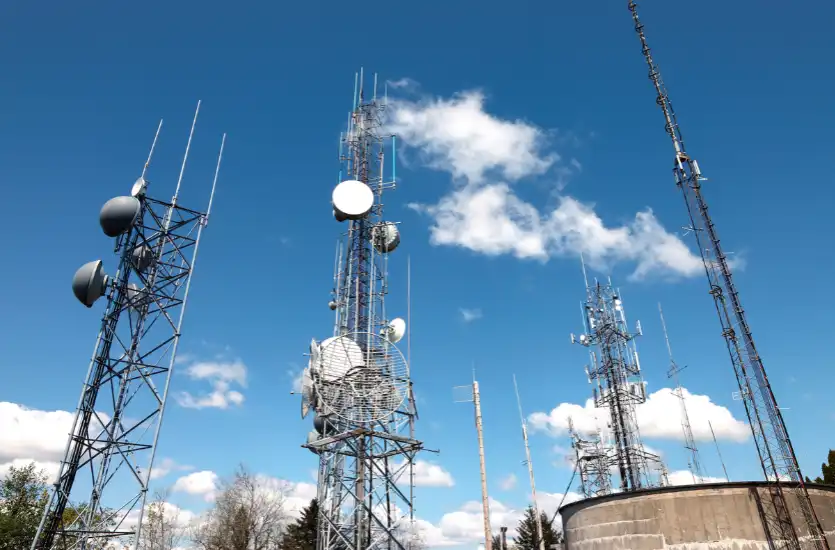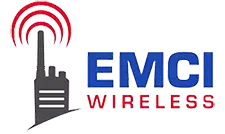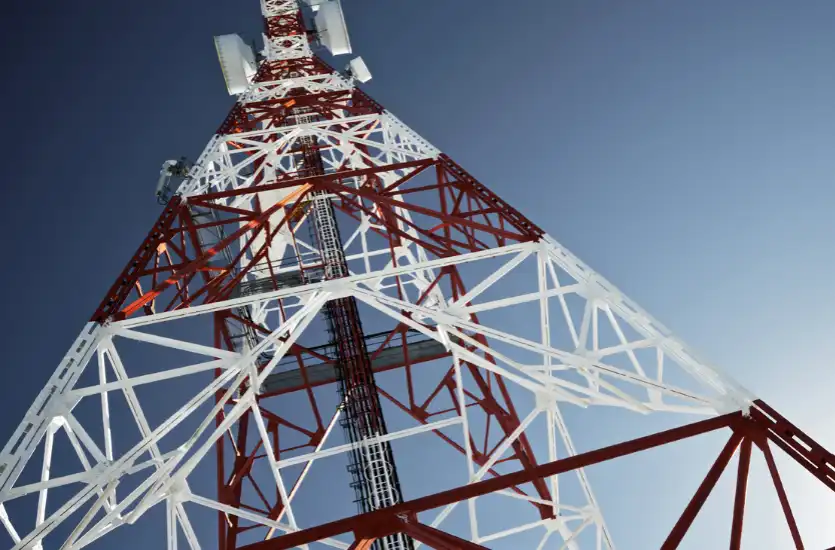Land mobile radio (LMR) systems are the backbone of communication for public safety and in many industries, connecting first responders, utility workers, and business teams in their daily operations. With increasing demand on the radio spectrum, narrowbanding—a shift from 25 kHz to 12.5 kHz efficiency technology—has become a key initiative to improve spectrum management and accommodate more users within limited frequencies.
In this article, we’ll explore what narrowbanding is, why it’s important for industries and public safety, the challenges organizations face in this transition, and how it benefits communication systems. And, of course, we’ll discuss how Florida’s very own EMCI Wireless can support this process.
What is Narrowbanding?
Let’s start by answering the obvious question—what is narrowbanding? Narrowbanding refers to a regulatory-driven initiative to improve the efficiency of land mobile radio (LMR) systems by requiring communication channels to use narrower bandwidths. As we said earlier, this transition involves moving from 25 kHz channel spacing to at least 12.5 kHz channel spacing. By compressing the frequency allocation for each channel, narrowbanding allows for more users to operate within the same spectrum range. This change is helping to address the growing demand for radio communications.
The frequency bands impacted by this transition fall within the very high frequency (VHF) and ultra-high frequency (UHF) ranges, commonly used by public safety agencies and industries such as utilities, manufacturing, transportation, hospitality, and more. These bands are highly valuable for supporting reliable, long-range communication.
This transition is guided by Federal Communications Commission (FCC) regulations, which mandate the use of more efficient technology to prevent spectrum congestion. The FCC’s goal is to improve spectrum usage while maintaining communication quality for all users. Compliance with these rules is non-negotiable, and organizations must update their systems accordingly to avoid penalties or disruptions.
Why Narrowbanding Matters
Clearly, the last thing anyone wants is to go to use their two-way radio only to find too much congestion and an inability to transmit important information when timing truly matters. But that’s not the only reason narrowbanding is so important. Consider the following reasons.
Spectrum Efficiency
The radio spectrum is a finite resource shared by countless users across public safety, industrial, and business sectors. Narrowbanding improves the efficiency of this resource by compressing the bandwidth allocated to each communication channel, effectively doubling the number of users who can operate within the same frequency range.
This expanded capacity is particularly valuable in densely populated areas or high-demand industries where communication channels are heavily used. By adopting narrower channel spacing, organizations can share the spectrum more equitably, reducing the risk of congestion and maintaining the reliability of their communication systems.
Interference Reduction
When communication systems operate too closely together on a limited spectrum, the risk of interference increases, leading to unclear or dropped transmissions. Narrowbanding addresses this issue by creating smaller channel widths, reducing overlap between adjacent frequencies.
This adjustment minimizes interference, even in environments with a high density of radio users, such as urban centers or large-scale industrial facilities. Clearer communication channels mean messages are transmitted more accurately, improving operational coordination across teams and departments without interruptions caused by overlapping signals.
Future-Proofing Communication Systems
As communication technology evolves, systems must be equipped to handle new demands and advancements. Narrowbanding aligns with modern standards, allowing organizations to integrate their LMR systems with updated technologies as they become available. Additionally, the move toward more efficient spectrum use prepares industries for future regulatory changes or frequency reallocations that may arise.
While the focus for the last 15 years of narrowbanding involved the transition from 25 kHz to 12.5 kHz channel spacing, it’s inevitable that the next step—achieving 6.25 kHz equivalent efficiency—will become a requirement in the coming years. This will include the transition from FDMA to TDMA operation. Regulatory bodies will almost certainly demand improvements in the effective capacity of 12.5 kHz channels, making the ability to carry two voice paths in a single 12.5 kHz channel a necessity. However, forward-thinking organizations don’t need to wait for mandates to benefit from this advancement. Digital technologies that deliver 6.25 kHz equivalent efficiency are available today, offering a host of advantages including increased channel capacity, enhanced audio clarity, and integrated data features. By adopting these technologies now, businesses can future-proof their systems, enjoy immediate operational improvements, and position themselves as early adopters of modern communication standards.

Industries Impacted by Narrowbanding
We touched on some of the industrial sectors impacted by narrowbanding earlier. However, it’s important to understand more specifically what this means. Consider the following examples.
Public Safety
For first responders, reliable communication can mean the difference between success and failure in emergency situations. Narrowbanding helps reduce interference and channel congestion, making it easier for police, fire departments, and EMS teams to coordinate efforts during high-pressure scenarios.
For example, some municipalities have successfully implemented narrowbanding to improve coordination between different agencies responding to large-scale emergencies, such as natural disasters or major public events. By adopting narrower bandwidths, these systems enable timely communication and reduce the risk of dropped or garbled messages.
Industrial and Business Sectors
Many industries rely on LMR systems to support large-scale operations and workforce communication. Transportation networks, utilities, manufacturing plants, and the hospitality industry, to name a few, benefit significantly from narrowbanding.
For instance, railways use LMR systems to coordinate train schedules and safety protocols in transportation. In remote utility operations, narrowbanding allows teams to operate effectively in areas with limited connectivity.
Critical Infrastructure Protection
Narrowbanding today is necessary for maintaining secure communication for infrastructure systems such as power grids, water utilities, and telecommunications. These services form the backbone of daily life and rely on uninterrupted communication to monitor, manage, and address operational challenges.
By adopting narrowbanding, these organizations reduce interference risks and maintain clear communication channels, even during high-demand periods or emergencies.
Challenges and Considerations in Narrowbanding
Narrowbanding offers significant benefits, but the transition isn’t without its challenges. Organizations face technical, financial, and logistical hurdles as they adapt their systems to meet the new requirements. Let’s take a look at the most common obstacles and considerations involved in narrowbanding.
Technical Upgrades
Transitioning to narrowbanding often requires substantial equipment upgrades. Radios, repeaters, and other communication hardware designed for 25 kHz channel spacing are incompatible with 12.5 kHz bandwidths.
These upgrades can come with significant costs, including purchasing new equipment, modifying existing systems, and deploying updated software. Downtime during installation is another consideration, as communication systems may be temporarily unavailable during the transition.
Training and Implementation
Introducing narrowbanding technology requires thorough training for both end users and technicians. Operators must understand how to use the updated equipment, while technicians need to learn how to install, maintain, and troubleshoot the new systems.
The learning curve can be steep, especially for organizations with large teams or limited technical expertise. Training programs and instructional resources are essential to avoid confusion and maintain communication reliability during and after the transition. Partnering with experienced providers such as EMCI Wireless can offer hands-on training and support that can significantly ease the process.
Compliance Deadlines
Meeting compliance deadlines is another major challenge in narrowbanding. And in reality, the compliance date has already come and gone. The Federal Communications Commission (FCC) mandated that all non-Federal public safety licensees using 25 kHz radio systems migrate to 12.5 kHz channels by January 1, 2013. This mandate applied to systems operating in the 150-174 MHz (VHF) and 421-512 MHz (UHF) bands.
Organizations that missed the deadline faced severe consequences, including the potential loss of communication capabilities, substantial fines, and even license revocation. Penalties could reach up to $16,000 per radio per day, with a maximum fine of $122,500. In extreme cases, non-compliance could result in the termination of operating licenses.
To comply, agencies were required to:
- Assess their current radio equipment.
- Apply for new or modified licenses.
- Modify or replace existing wideband systems.
If your organization still needs to make the change, now is the time to make it happen.

Tips for Compliance
To address these challenges and avoid penalties, organizations should take proactive steps, including:
- Conducting a comprehensive inventory of all communication equipment to identify non-compliant components.
- Developing a detailed transition plan, including timelines and budgets.
- Partnering with trusted vendors or service providers to assist with system upgrades and compliance requirements.
- Providing ongoing training to operators and technical teams to make sure the transition is as easy as can be.
- Regularly reviewing FCC updates and guidelines to stay informed of regulatory changes.
Benefits of Narrowbanding for Organizations
Aside from avoiding penalties and making sure your communications go through when you need them to, here are the benefits of narrowbanding for your internal business case.
- Improved Spectrum Utilization: Narrowbanding allows more users to operate within the same frequency range, reducing congestion and maximizing the available spectrum for communication.
- Reduced Interference: Narrower channel spacing minimizes signal overlap, leading to clearer transmissions and fewer interruptions during communication.
- Increased System Capacity: Narrowbanding creates additional communication channels, allowing organizations to accommodate growing teams or operations without acquiring new spectrum.
- Alignment with Modern Standards: Transitioning to narrowbanding aligns communication systems with current FCC requirements and technological advancements, positioning organizations to adopt future innovations more easily.
- Better Communication Clarity: Narrowbanding reduces noise and distortion in transmissions, leading to more accurate information exchanges across teams.
- Cost Savings Over Time: While the initial investment may be significant, upgraded systems often offer longer lifespans and reduced maintenance costs, creating long-term financial benefits.
- Compliance with Regulatory Requirements: Narrowbanding avoids the risk of fines or penalties associated with non-compliance and keeps operations in good standing with FCC mandates.
- Improved Team Coordination: Clearer, uninterrupted communication supports better collaboration and faster decision-making across teams, particularly in high-stakes environments.
- Support for Scalable Operations: Organizations with expanding needs can rely on narrowbanding to accommodate growth without compromising communication reliability.
The Role of EMCI Wireless in Supporting Narrowbanding
If your organization is overdue in switching to narrowbanding, know it requires careful planning, the right equipment, and ongoing technical support. That’s where EMCI Wireless comes in. With decades of experience in communication solutions, we’re dedicated to helping businesses and public safety organizations adapt their systems to meet narrowbanding requirements.
Serving various markets throughout Florida, including cities like Clearwater, Kissimmee, Pensacola, and Tallahassee, we’re here to help. From assessing your current equipment to recommending upgrades and facilitating installations, our team works closely with you to make the process as flawless as possible.
In addition to technical support, we provide training to help your team understand and use new systems effectively. We’re also available to assist with FCC compliance, including license modifications and meeting regulatory deadlines.
Whether you’re upgrading equipment, expanding communication capabilities, or maintaining compliance, EMCI Wireless is your trusted partner for staying ahead of the curve. Contact us today to learn how they can help your organization make the most of narrowbanding while keeping your operations running without interruption.

